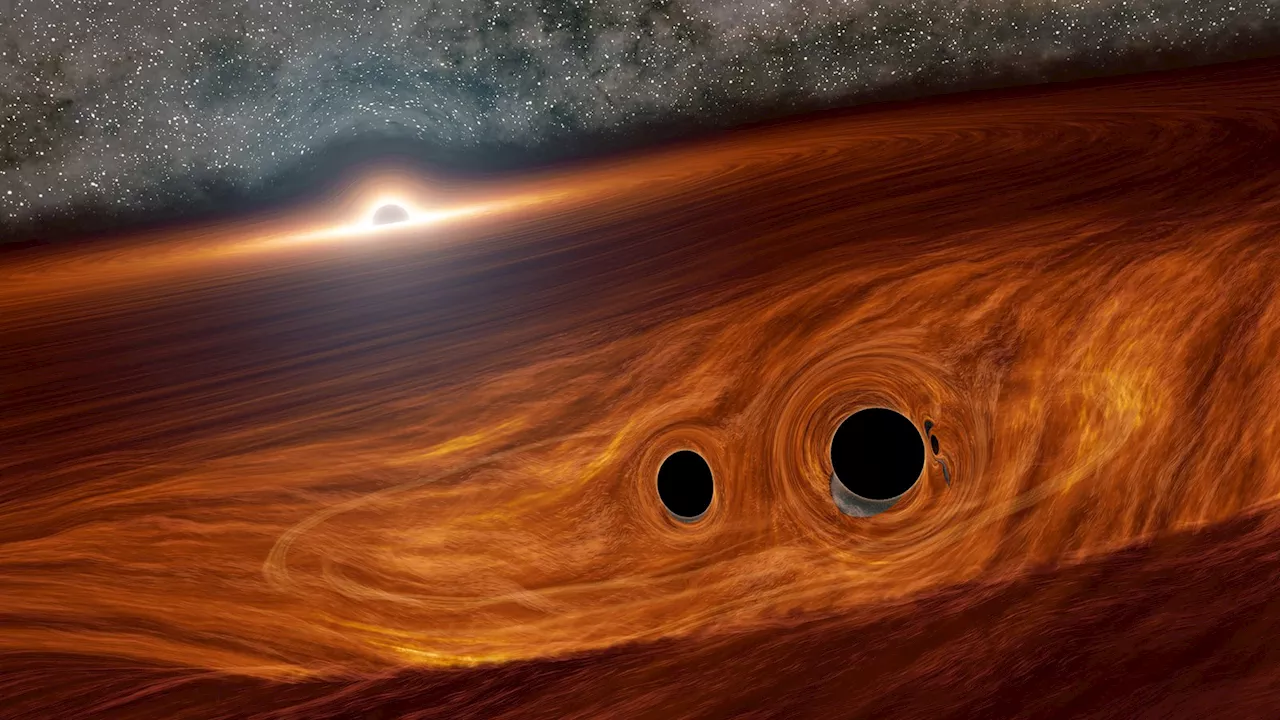Science, Space and Technology News 2024
New findings by MIT show early supermassive black holes grew rapidly from large cosmic seeds, challenging previous understandings of galaxy formation. Credit: SciTechDaily.comastronomers, revealing that some of earliest “monster” black holes likely grew from massive cosmic seeds.
Based on this elusive stellar light, the researchers estimated the mass of each host galaxy, compared to the mass of its central supermassive black hole. They found that for these quasars, the central black holes were much more massive relative to their host galaxies, compared to their modern counterparts.
“These black holes are billions of times more massive than the sun, at a time when the universe is still in its infancy,” says study author Anna-Christina Eilers, assistant professor of physics at MIT. “Our results imply that in the early universe, supermassive black holes might have gained their mass before their host galaxies did, and the initial black hole seeds could have been more massive than today.
In their new study, Yue and Eilers used dedicated time on JWST to observe six known, ancient quasars, intermittently from the fall of 2022 through the following spring. In total, the team collected more than 120 hours of observations of the six distant objects. “This tells us something about what grows first: Is it the black hole that grows first, and then the galaxy catches up? Or is the galaxy and its stars that first grow, and they dominate and regulate the black hole’s growth?” Eilers explains. “We see that black holes in the early universe seem to be growing faster than their host galaxies. That is tentative evidence that the initial black hole seeds could have been more massive back then.
South Africa Latest News, South Africa Headlines
Similar News:You can also read news stories similar to this one that we have collected from other news sources.
 Astronomers Struggle to Explain Why Ancient Black Holes Are Nowhere to Be FoundScience and Technology News and Videos
Astronomers Struggle to Explain Why Ancient Black Holes Are Nowhere to Be FoundScience and Technology News and Videos
Read more »
 Crowned | POPSUGARStories that center Black experiences, amplify Black voices, and celebrate Black joy.
Crowned | POPSUGARStories that center Black experiences, amplify Black voices, and celebrate Black joy.
Read more »
 If We Could Find Them, Primordial Black Holes Would Explain a Lot About the UniverseSpace and astronomy news
If We Could Find Them, Primordial Black Holes Would Explain a Lot About the UniverseSpace and astronomy news
Read more »
 Scientists may have finally solved the problem of the universe’s 'missing' black holesBen Turner is a U.K. based staff writer at Live Science. He covers physics and astronomy, among other topics like tech and climate change. He graduated from University College London with a degree in particle physics before training as a journalist.
Scientists may have finally solved the problem of the universe’s 'missing' black holesBen Turner is a U.K. based staff writer at Live Science. He covers physics and astronomy, among other topics like tech and climate change. He graduated from University College London with a degree in particle physics before training as a journalist.
Read more »
 Elusive medium-size black holes may form in dense 'birthing nests'Robert Lea is a science journalist in the U.K. whose articles have been published in Physics World, New Scientist, Astronomy Magazine, All About Space, Newsweek and ZME Science. He also writes about science communication for Elsevier and the European Journal of Physics. Rob holds a bachelor of science degree in physics and astronomy from the U.K.
Elusive medium-size black holes may form in dense 'birthing nests'Robert Lea is a science journalist in the U.K. whose articles have been published in Physics World, New Scientist, Astronomy Magazine, All About Space, Newsweek and ZME Science. He also writes about science communication for Elsevier and the European Journal of Physics. Rob holds a bachelor of science degree in physics and astronomy from the U.K.
Read more »
 Medium and mighty: Intermediate-mass black holes can survive in globular clustersNew research demonstrated a possible formation mechanism of intermediate-mass black holes in globular clusters, star clusters that could contain tens of thousands or even millions of tightly packed stars.
Medium and mighty: Intermediate-mass black holes can survive in globular clustersNew research demonstrated a possible formation mechanism of intermediate-mass black holes in globular clusters, star clusters that could contain tens of thousands or even millions of tightly packed stars.
Read more »
